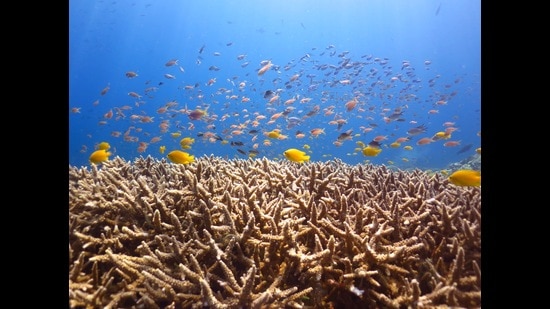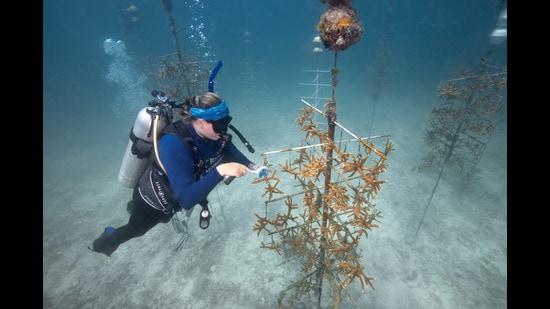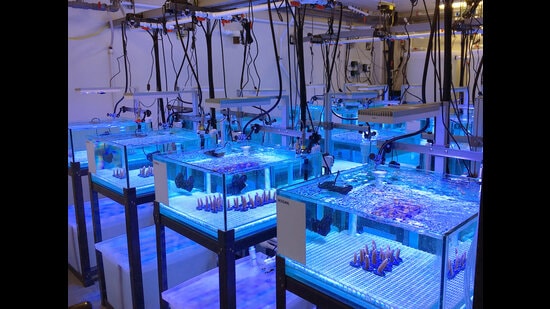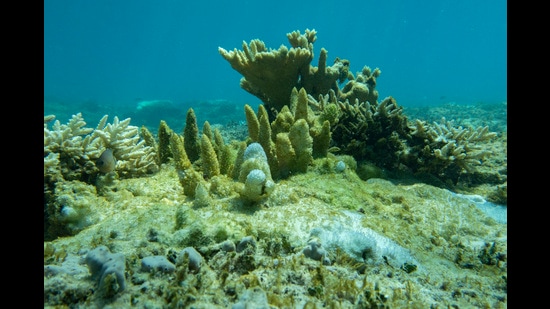
Reef encounters: See photos of global efforts to save threatened corals
2 months ago | 32 Views

A Coral Restoration Foundation (CRF) diver removes organisms that would compete with the corals for nutrients, on a coral tree. CRF has successfully rehabilitated corals over the years by nurturing them in “nurseries” made up of these vertical structures. They are then reattached to parent reefs, to keep the latter from fading.
.

At the Experimental Reef Lab (ERL) at the University of Miami, staghorn coral fragments are exposed to stressful conditions in tanks. “Think of this like going to the gym and working out really hard, then going home to relax and recover. Do that every day and it tends to make us stronger, more capable of dealing with stress,” says Ian Enochs, head of the coral programme at NOAA’s Atlantic Oceanographic and Meteorological Laboratory. Do this enough, he adds, and it makes you stronger. Studies are showing that this is true of corals too.
.

Marine biologist Peter Harrison using in-vitro fertilisation (IVF) at a restoration site. The spawn of heat-tolerant specimens that have survived bleaching events are captured and used to rear larvae in special floating reef pools on the surface of the ocean. The larvae are then transplanted onto degraded sections of a reef, so those sections “have a higher chance of surviving future changes,” says Harrison, founding director of the Marine Ecology Research Centre at Southern Cross University, Australia.
.

A dead patch of Acropora in Lakshadweep. In India, efforts have largely consisted of restoration programmes in which coral fragments are protected in underwater “nurseries” and then transplanted to a reef. Most of these efforts have focused on the fast-growing Acropora species, which is extremely sensitive to temperature.
Read Also: world population day: how overpopulation is affecting public health in india




















